2017 下半年教师资格考试初中英语面试真题
第一批
二、考题解析
【教案】
Teaching Aims:
Knowledge aim: By the end of the class, students can muster knowledge of
if-clause.
Ability aim: Students can use if-clause in their daily life.
Emotional aim: Students will feel the happiness of learning English in joyful,
�
free and open atmosphere, and will be confident to express in English.
Teaching Key Points:
Students can know the structure, function and tense of if-clause.
Teaching Difficult Point:
Students can put the new knowledge into practice.
Teaching Methods:
Tasked-based Teaching Method, Communicative Approach.
Teaching Aids:
The blackboard
Teaching Procedures:
Step 1: Lead-in
Greeting with the students.
Sing a song for students- if you are happy. Ask them “Did you hear the word-if”
to lead in the class.
Step 2: Presentation
Let the students read the passage and find out sentences with “if”. Then teacher
will ask students write these sentences on the blackboard. Then find out the
similarities among these sentences.
According to the answers from students, teacher make a brief summary:1.
�
If-clause means condition and the main clause is the result. 2. The main clause and
if-clause have the same tense. However, if it describes things in the future, the
main clause uses the Simple Future Tense and if-clause use the Simple Present Tense.
Step 3: Practice
Read the sentences by themselves and practice with neighbors.
Step 4: Production
Use the sentence and structure what we learned today to make a conversation with
your neighbor and invite some students performance it.
Step 5: Summary and homework
Summary: Sum up what we have learned today.
Homework: After class, teach these sentences to their parents.
Blackboard Design:
�
二、考题解析
【教案】
Teaching Aims
Knowledge aim:
Students can understand this short passage and master some expressions about
comparative degree.
Ability aim:
Students will improve their reading efficiency and reading ability.
Emotional aim
�
Students are willing to read a lot of English reading materials in their daily
life.
Teaching Key &Difficult Points
Key point: Students can understand comparative degree.
Difficult point: foster good habit of reading English materials in their daily
life.
Teaching procedures:
Step 1: Warming up
Show two pictures of twins, encourage students to describe them in their own
words and then share their answer with each other.
Step 2: Presentation
Read the short passage for the first time and they need to read it as fast as
the can, ask them what is the main idea of this passage and students share answers.
Students read the passage for the second time and ask them some more questions
and ask them to pay attention to the comparative degree.
Step 3: Practice
Give students some adjective or adverbial words, and ask them to write down the
comparative form of these words, the one who writes most without mistakes will get
a present.
Step 4: Production
�
Students work in groups to describe a person with comparative degree, teacher
will give them 8 minutes to prepare it and 8 minutes later, invite some students
to be the story teller to introduce his or her friends.
Step 5: Summary & Homework
Students look at the blackboard and retell the short passage to summarize this
class, and the homework is that students introduce Jenny and Nancy to their friends
or parents.
Blackboard design
第二批
�
二、考题解析
【教案】
Teaching aims:
Knowledge aim:
Students will master the expression of date and the sentence structure: -What
is ...’s birthday? -It is ...
Ability aim:
Students will improve their abilities of speaking and listening.
Emotional aim:
Students will be more confident in speaking English.
�
Key and difficult point:
Key Point: Students will master how to express a date in English.
Difficult Point: Students will use the sentence structure in daily life.
Teaching procedure:
Step 1: Warming-up
1. Greetings.
2. Ask students if today is anyone’s birthday. And invite the whole class to
sing a ‘Happy Birthday’ song to him or her.
Step 2: Pre-listening
1. Review the knowledge about ordinal numeral: write some numbers on the
blackboard and ask students to change the cardinal numeral into ordinal numeral.
2. Ask students to look at the picture in the textbook to predict what the
dialogue may be about.
Step 3: While-listening
�
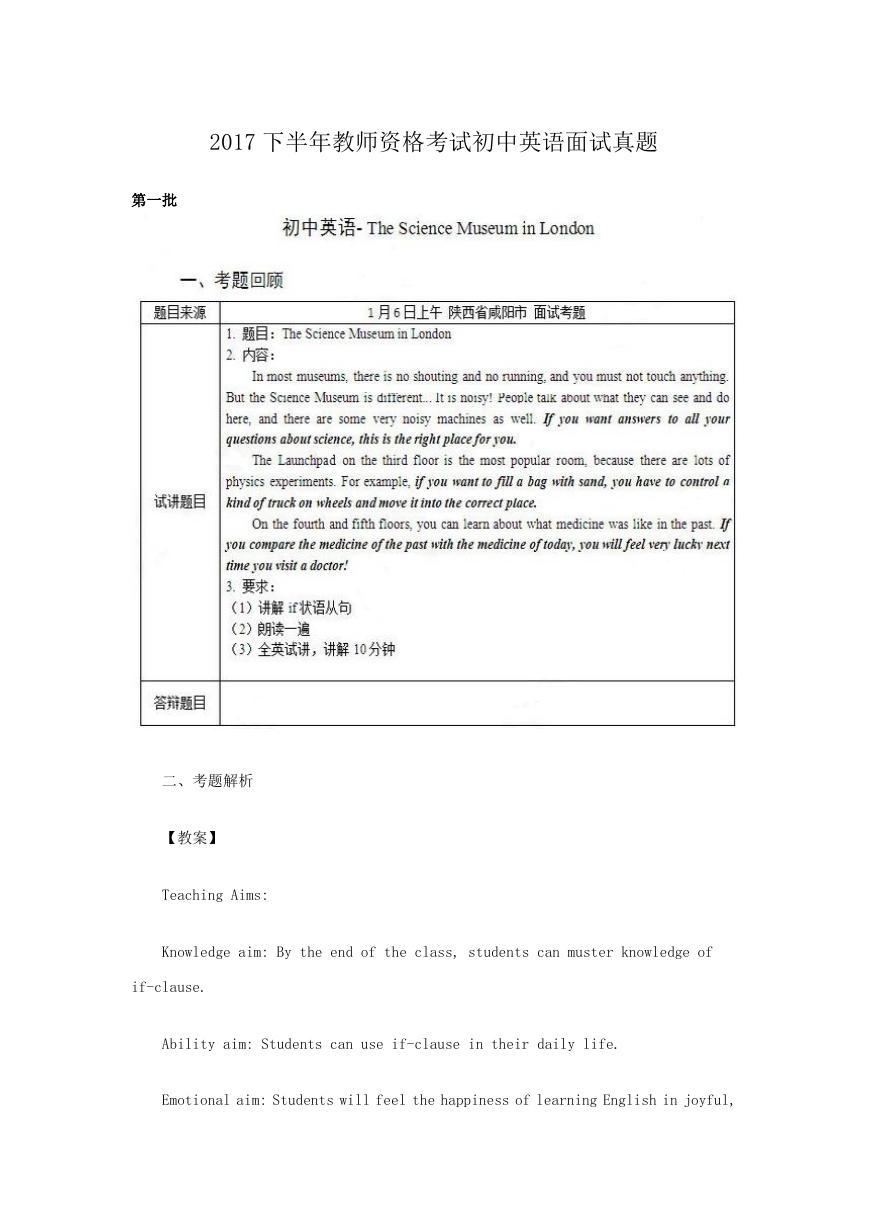
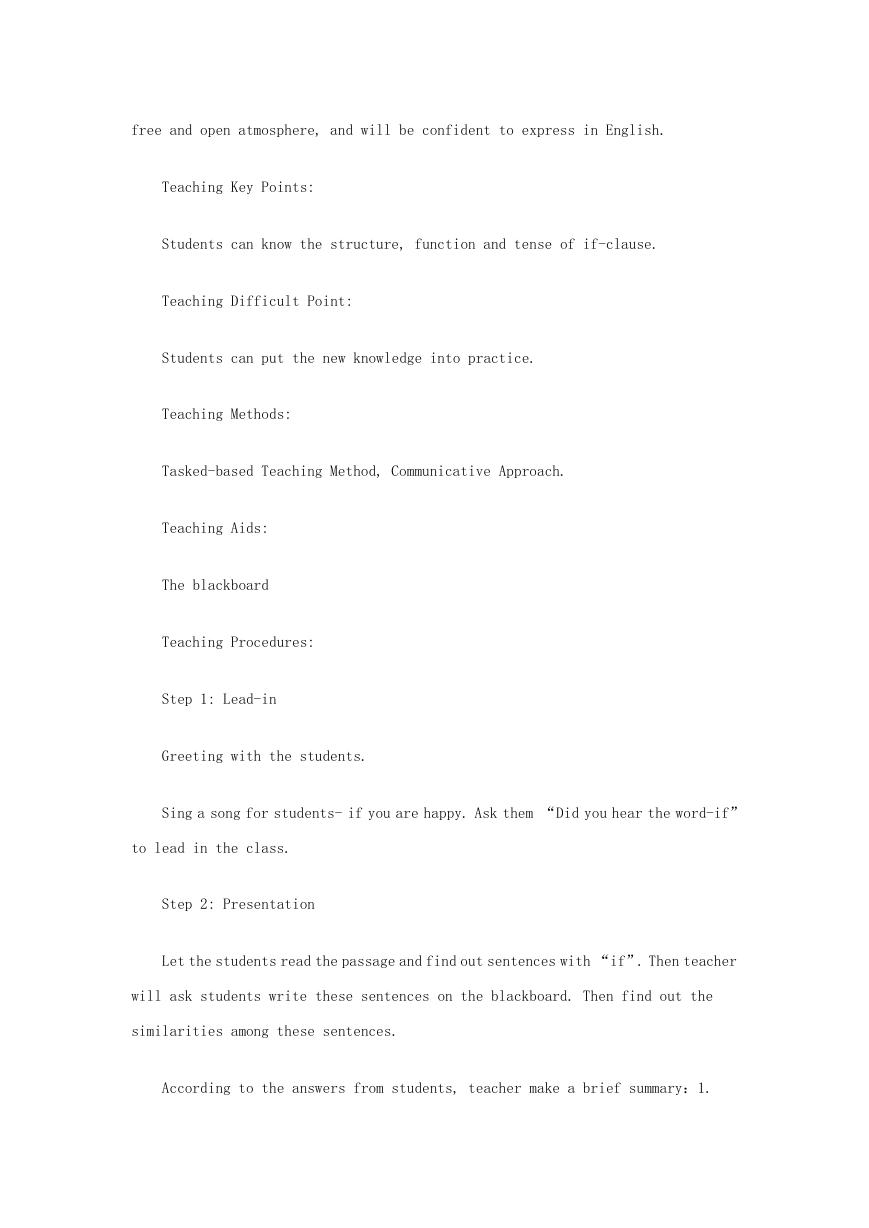

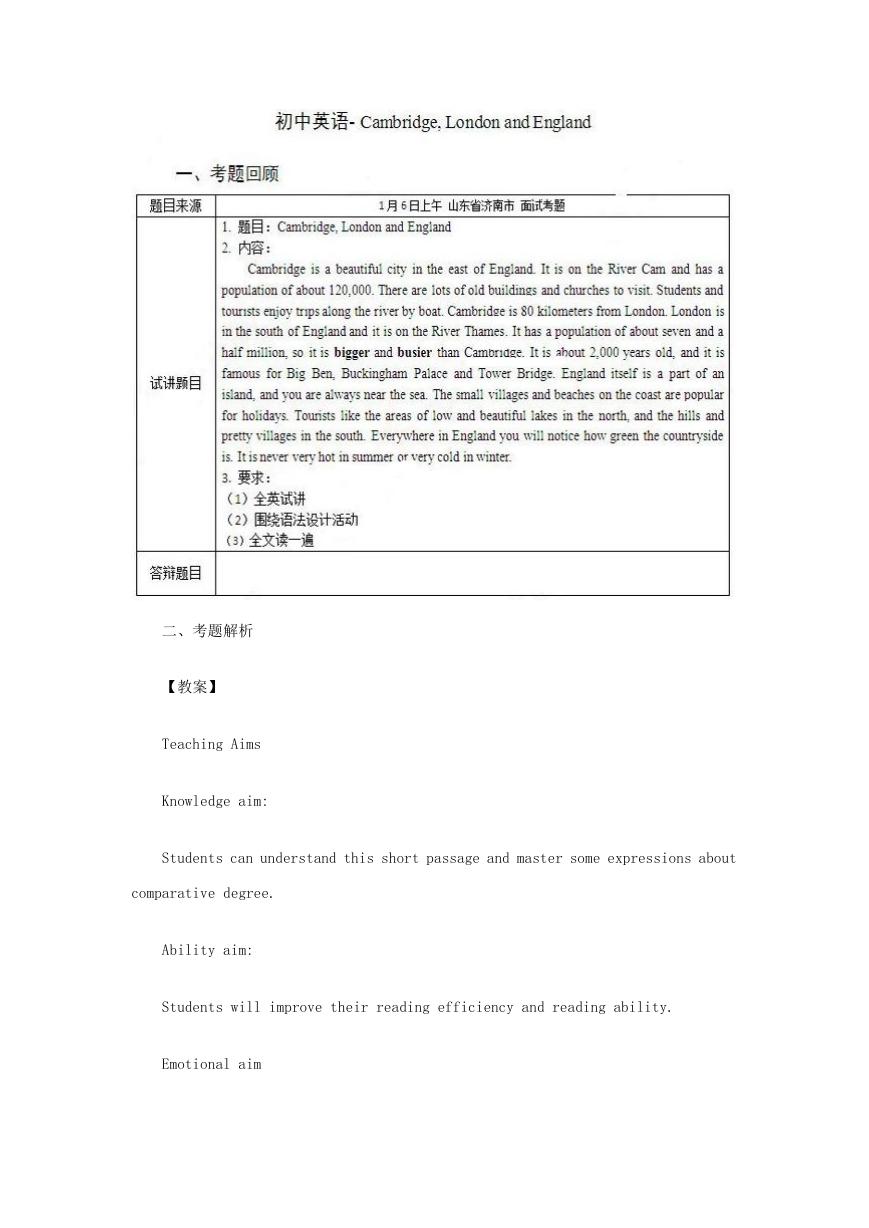
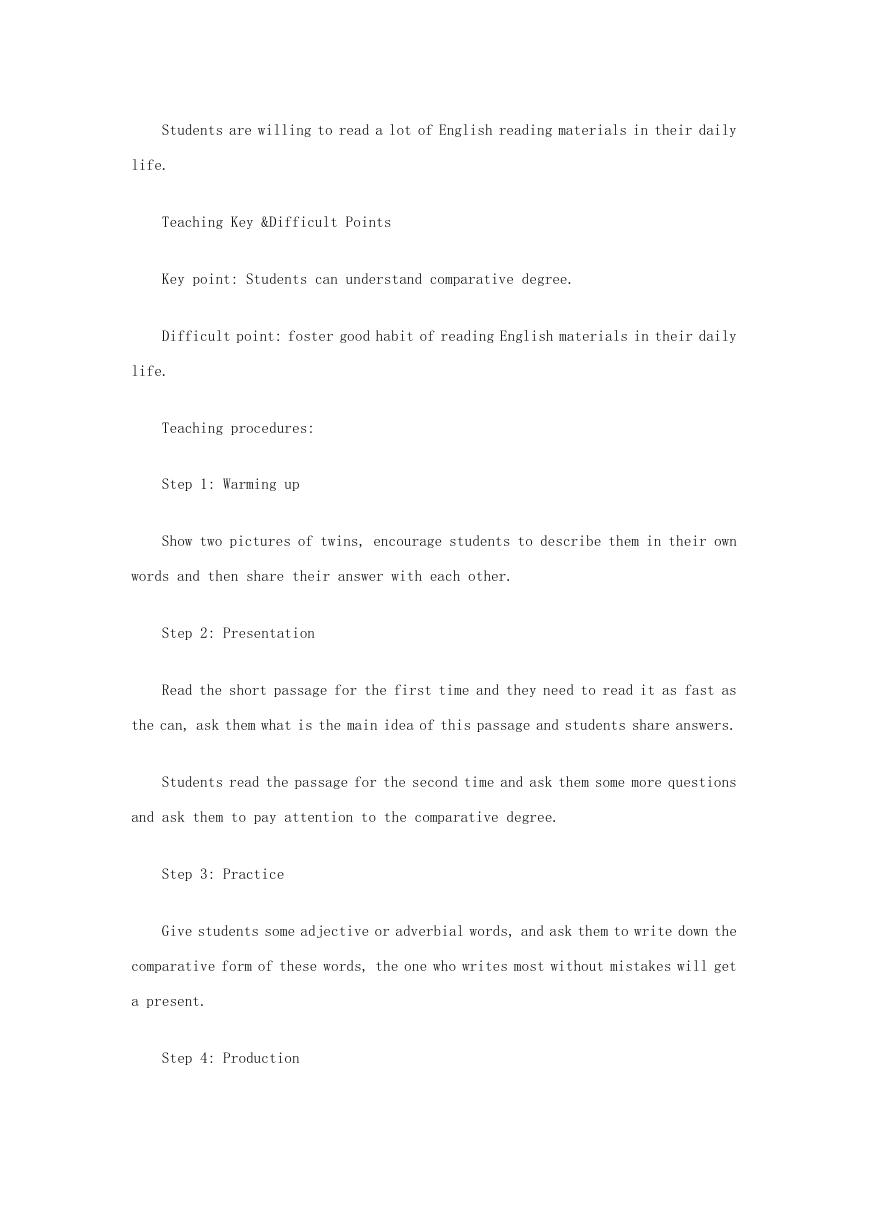
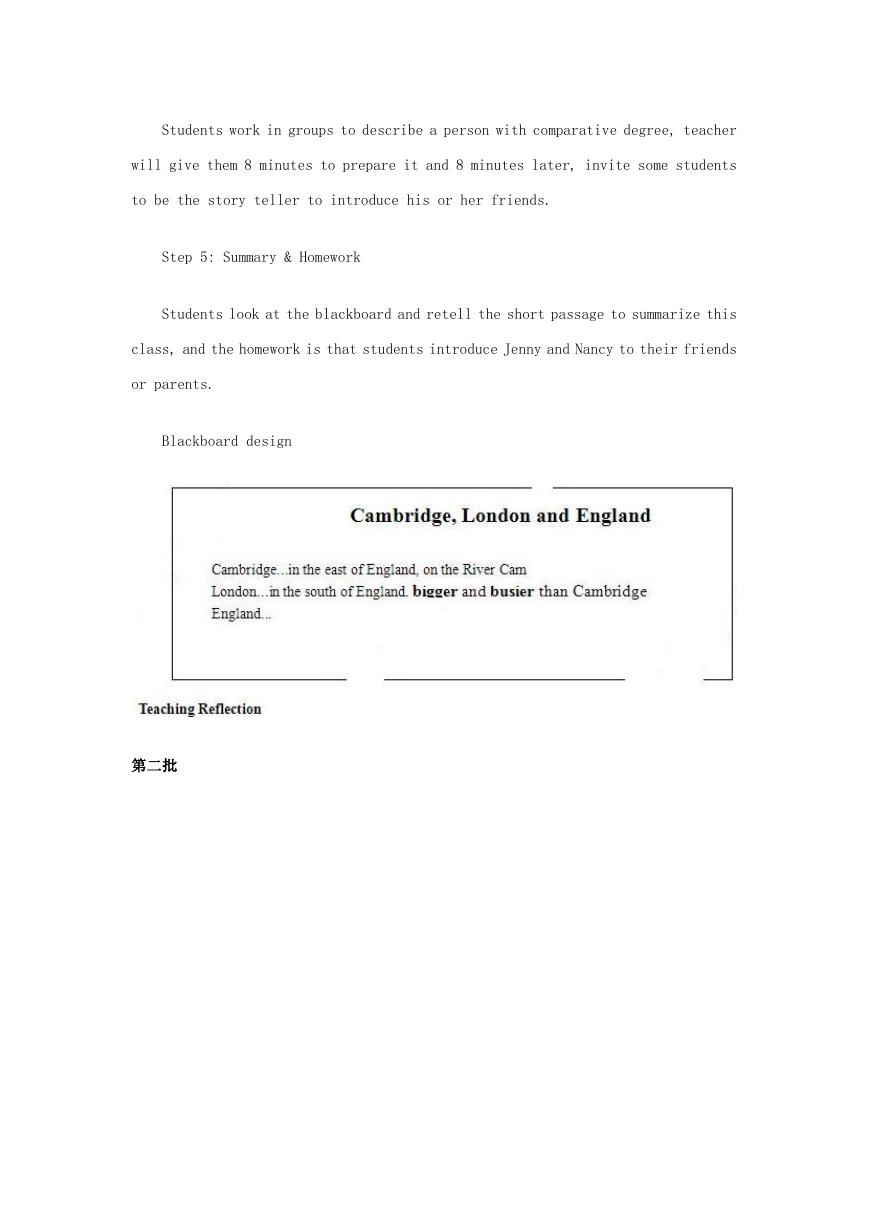
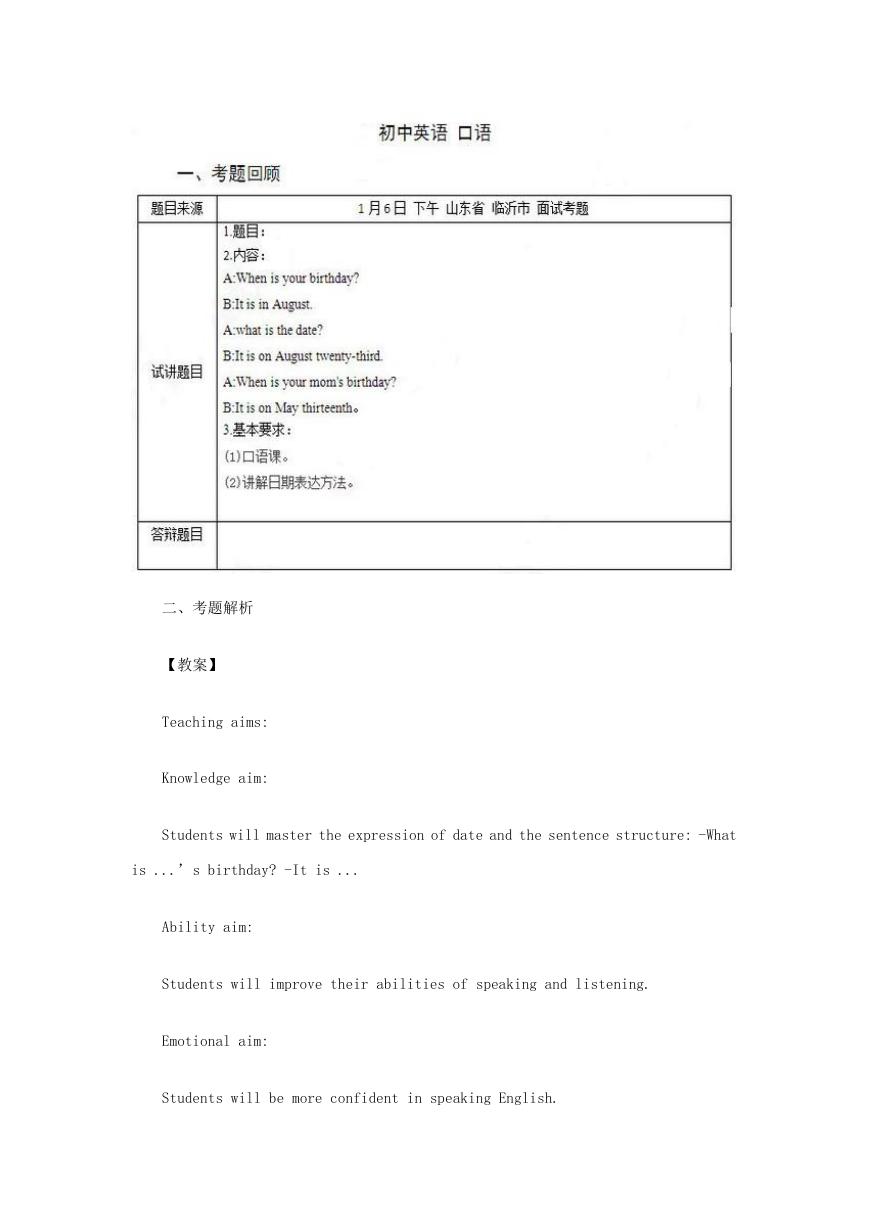
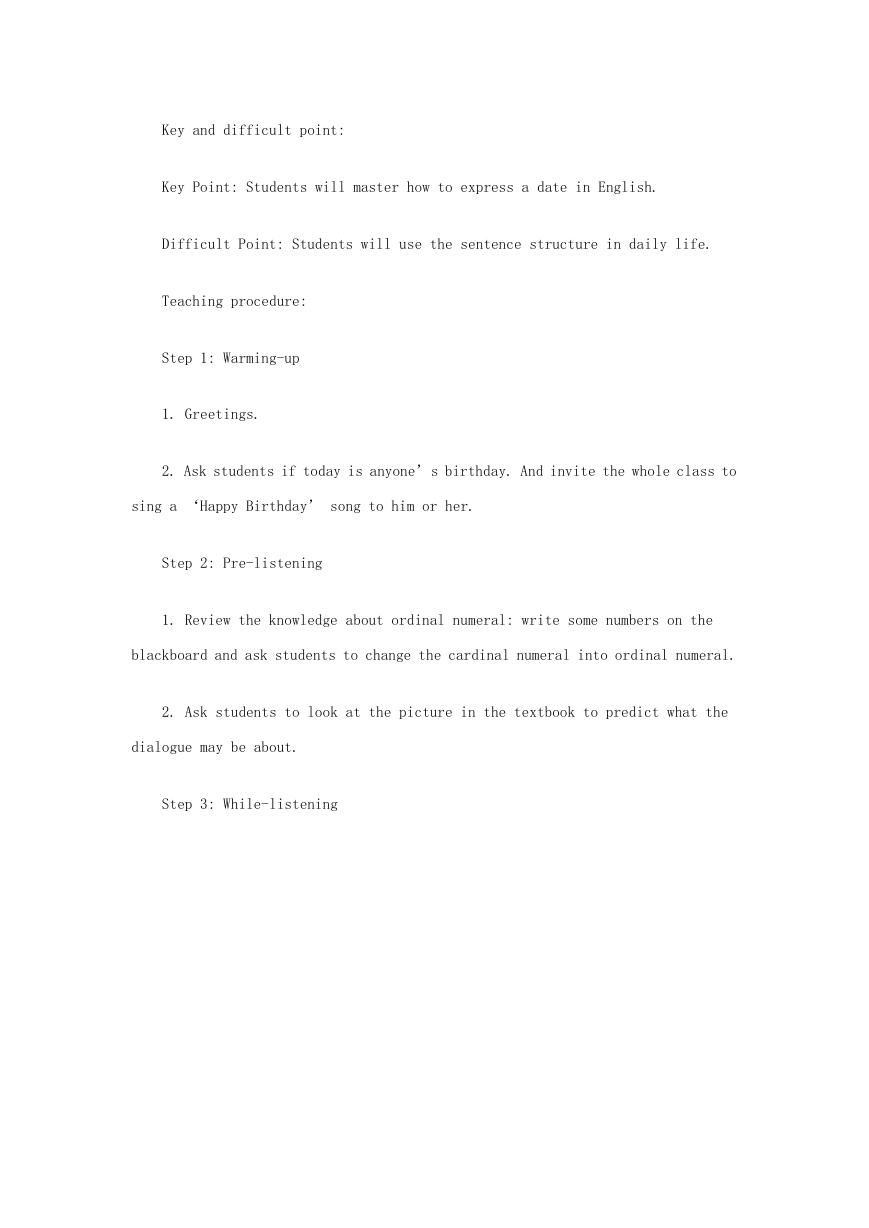








 2023年江西萍乡中考道德与法治真题及答案.doc
2023年江西萍乡中考道德与法治真题及答案.doc 2012年重庆南川中考生物真题及答案.doc
2012年重庆南川中考生物真题及答案.doc 2013年江西师范大学地理学综合及文艺理论基础考研真题.doc
2013年江西师范大学地理学综合及文艺理论基础考研真题.doc 2020年四川甘孜小升初语文真题及答案I卷.doc
2020年四川甘孜小升初语文真题及答案I卷.doc 2020年注册岩土工程师专业基础考试真题及答案.doc
2020年注册岩土工程师专业基础考试真题及答案.doc 2023-2024学年福建省厦门市九年级上学期数学月考试题及答案.doc
2023-2024学年福建省厦门市九年级上学期数学月考试题及答案.doc 2021-2022学年辽宁省沈阳市大东区九年级上学期语文期末试题及答案.doc
2021-2022学年辽宁省沈阳市大东区九年级上学期语文期末试题及答案.doc 2022-2023学年北京东城区初三第一学期物理期末试卷及答案.doc
2022-2023学年北京东城区初三第一学期物理期末试卷及答案.doc 2018上半年江西教师资格初中地理学科知识与教学能力真题及答案.doc
2018上半年江西教师资格初中地理学科知识与教学能力真题及答案.doc 2012年河北国家公务员申论考试真题及答案-省级.doc
2012年河北国家公务员申论考试真题及答案-省级.doc 2020-2021学年江苏省扬州市江都区邵樊片九年级上学期数学第一次质量检测试题及答案.doc
2020-2021学年江苏省扬州市江都区邵樊片九年级上学期数学第一次质量检测试题及答案.doc 2022下半年黑龙江教师资格证中学综合素质真题及答案.doc
2022下半年黑龙江教师资格证中学综合素质真题及答案.doc